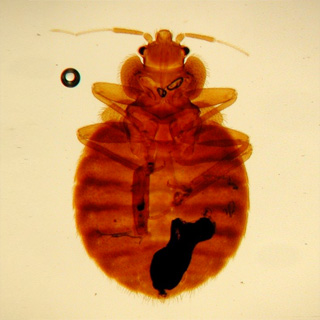
A confidential questionnaire with 15 questions was sent by mail to all PMPs. The data were collected from January to June 2009. Out of 1,147 questionnaires sent, 143 (12.5%) were returned and analyzed. The respondents were active in this profession for periods ranging from 1 to 52 years (average 18.1 years). Seventy-seven (53.8%) of the respondents reported that they had seen and treated at least one bed bug infestation in the country during the period covered by the questionnaire. During the years 2006-2008 a 50-150% increase occurred in the reported cases of infestations as compared to the period from 2001-2005. Bed bugs were mainly reported in new (10) and old (31) hotels, in new (31) and old (84) residences, in new (8) and old (8) prisons, as well as in industrial buildings (13). Infestations were also reported less frequently in youth hostels, store rooms, court houses, army barracks, and caravans for new immigrants, as well as in day schools and boarding schools. Most respondents (42.8%) thought that bed bugs are imported by travelers, 26.7% thought that the increase in infestations was due to resistance to insecticides and 30.5% to unawareness of the problem, prohibition of use of organophosphates inside houses and work places, increasing numbers of foreign workers and new immigrants from developing countries. The most commonly used pesticides cited in the questionnaire were pyrethroids followed by organophosphates and carbamates. It was concluded that increased public awareness and education of PMPs and appropriate treatment of the infestation, surveillance, prevention, and use of insecticides other than pyrethroids, are all needed to minimize the risk of acquiring or transporting bedbugs, and to prevent them from being reestablished in Israel (Mumcuoglu & Shalom, 2011).
Human bed bug infestations have dramatically increased worldwide since the mid-1990s. A similar phenomenon was also observed in Israel since 2005, when infestations were reported from all over the country. Two single nucleotide polymorphisms (V419L and L925I) in the bed bug voltage sensitive sodium channel confer kdr-type resistance to pyrethroids. Using quantitative sequencing (QS), the resistance allele frequencies of Israeli bed bug populations from across the country were determined. Genomic DNA was extracted from samples of 12 populations of bed bugs collected from Israel and DNA fragments containing the V419L or L925I and I936F mutations sites were PCR amplified. The PCR products were analyzed by QS and the nucleotide signal ratios calculated and used to predict the resistance allele frequencies of the unknown populations. Results of the genetic analysis show that resistant nucleotide signals are highly correlated to resistance allele frequencies for both mutations. Ten of the 12 tested populations had 100% of the L925I mutation and 0% of the V419L mutation. One population was heterogeneous for the L925I mutation and had 0% of the V419L mutation and another population was heterogeneous for the V419L mutation and had 100% of the L925I mutation. I936F occurred only at low levels. These results indicate that bed bugs in Israel are genetically resistant to pyrethroids. Thus, pyrethroids should only be used for bed bug management with caution using effective application and careful monitoring procedures (Palenchar et al. 2015).
Bibliography:
Mumcuoglu, K.Y. & U. Shalom. 2011. Questionnaire survey of common bed bug (Cimex lectularius) infestations in Israel. Isr. J. Entomol. 40: 1-10.
Palenchar DJ, Gellatly KJ, Yoon KS, Mumcuoglu KY, Shalom U, Clark JM. 2015. Quantitative sequencing for the determination of kdr-type resistance allele (V419L, L925I, I936F) frequencies in common bed bug (Hemiptera: Cimicidae) populations collected from Israel. J. Med. Entomol. 52: 1018-27. doi: 10.1093/jme/tjv103.
Additional publications on this subject:
Mumcuoglu K.Y. & T. Rufli. 1979. Dermatoloical Entomology. The practical-medical importance of mites and insects in Switzerland and surrounding regions. 3. Heteroptera/bugs] (In German). Schweiz Rundsch Med Prax. 68: 1516-1522.
Mumcuoglu, K.Y. 2008. A case of imported bed bug (Cimex lectularius) infestation in Israel. IMAJ 10: 388-389.

